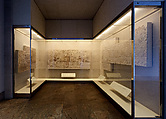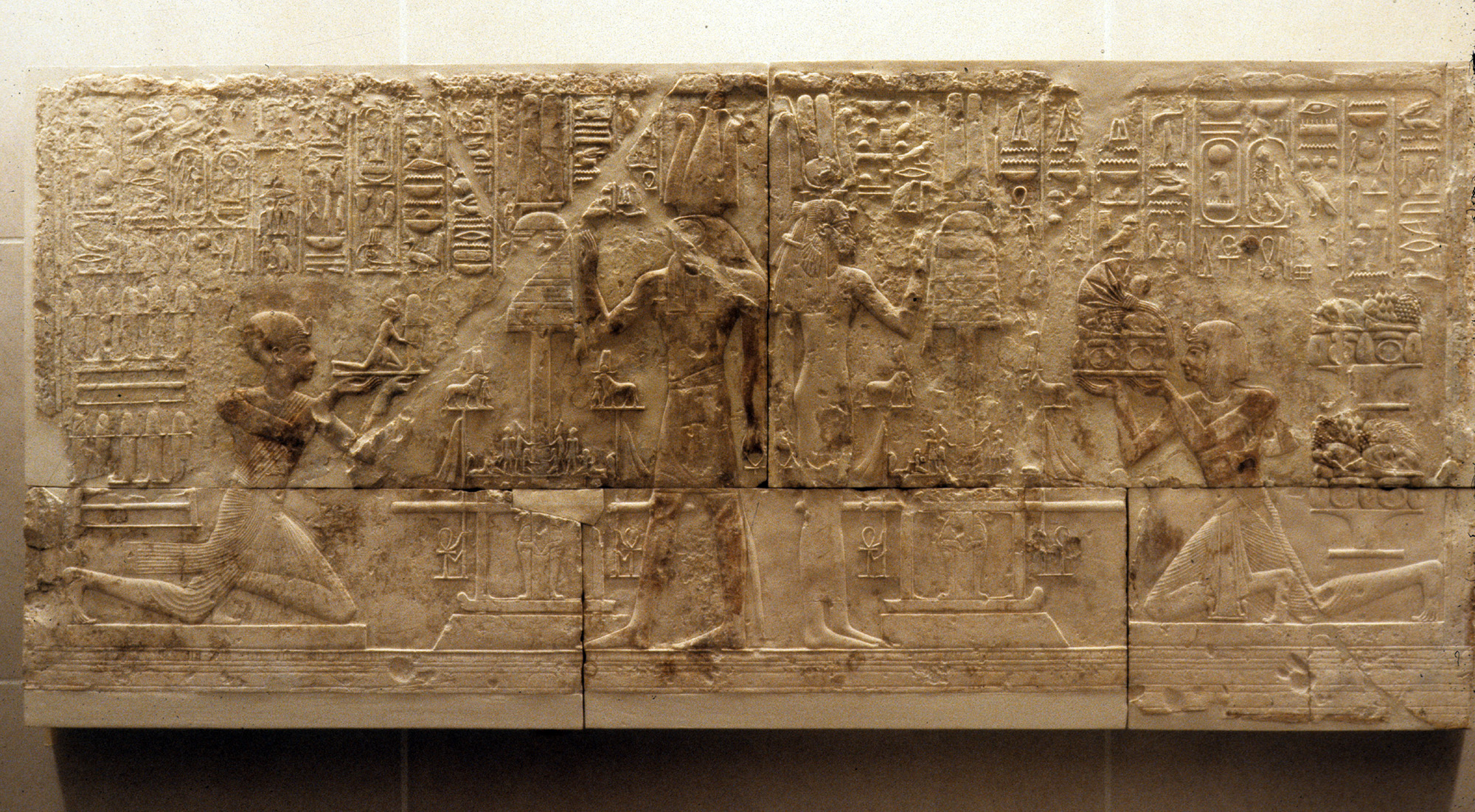Reliefs from a Chapel of Ramesses I
New Kingdom, Ramesside
Displayed in Gallery 129 are reliefs from three walls of the chapel of Ramesses I at Abydos. This monarch came to the throne as an elderly man; this chapel was completed by his son and successor, Seti I.
On the north wall (see 11.155.3a-related), Ramesses I is depicted as a deceased king who has become divinized and identified with the god Osiris, ruler of the dead. The king is seated, with one hand stretched out toward a small offering table, with piles of food and drink to the right. Above is a list of offerings, now partially lost. This is followed by a long series of spells, originally from the Pyramid Texts (Old Kingdom, ca. 2400 B.C.), designed to ensure that "the mouth of the Son of Re, Ramesses, shall not thirst, nor shall it hunger." The small figures to the lower right perform offering rituals. There would once have been a figure of Seti I leading these rituals; this is now lost. The king's chair rests on a platform whose central support takes the shape of the hieroglyph for "unite," around which two Nile gods tie the symbols of Upper and Lower Egypt (the papyrus and lotus plants). Additional Nile gods bring vases of fresh water symbolizing "life, all happiness, all food, all provisions."
The adjacent western wall (see 11.155.3b), is divided centrally. On the right, Ramesses I, accompaniend by Isis, presents a floral bouquet to the Abydene cult symbol of Osiris. On the left, it is his son Seti I, with the falcon-headed god Horus, who offers a statue of himself with a jar of myrrh to the Osiris fetish. In return for the fetish, Osiris says to Seti: "My chosen son of my body, lord of Two Lands, Menmaatre (Seti's throne name), my heart is happy and content because you have acted. You are my son and protector. As long as the sun exists, your name will exist. As long as the sky exists, your deeds will exist." The register above this, now lost, centered on another symbol of Osiris, the djed pillar.
The south wall (see 11.155c, d–related) shows Ramesses I and his family presenting offerings to a statue of Osiris, behind which stand figures of Isis and Hathor. Ramesses is seen "making incense and libation" over offerings piled before the shrine of Osiris. Ramesses, who is shown "making incense and libation" offering a pile of offerings, is accompanied by his queen, Sitre, shaking two rattles known as sistra. Behind her was a procession of men and women carrying bouquets (not on display). The scene in the lower register continued onto the short west face of the doorway, with two more women bearing bouquets. The upper register (now lost) showed Ramesses leading four young bulls to "Osiris Onnophris."
An additional relief block, 12.186.1, was also donated to the museum. This depicts the head of a king, most likely Seti I, his visible hand raised in a gesture of prayer.
This image cannot be enlarged, viewed at full screen, or downloaded.
This artwork is meant to be viewed from right to left. Scroll left to view more.



